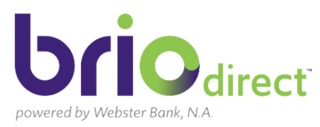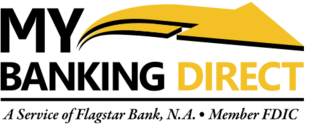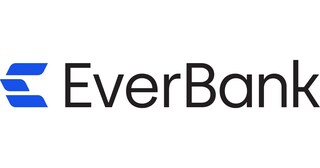Best Banks for High-Yield Savings Accounts for 2025
*Rates and APYs are subject to change. All information provided here is accurate as of April 30, 2025.
When you’re building up your emergency fund or saving for short-term goals such as a vacation or new car, it’s important to put your money somewhere where it’s easily accessible. But with interest rates so low on traditional savings accounts, you’re not likely to see that money grow much more than you would if you stuck it in a piggy bank.
High-yield savings accounts (HYSAs), on the other hand, offer annual percentage yields (APYs) much higher than traditional savings accounts. Read on for our list of banks and credit unions offering the best HYSA rates right now, as well as a guide on how these savings accounts work and how to choose the best one for you.
What to know about HYSA rates
- Banks and credit unions can change the APYs on HYSAs at any time. They tend to take cues from the Federal Reserve, which adjusts its benchmark interest rate to keep inflation under control and the economy growing at a steady pace.
- The interest rate on a bank account is the percentage of interest you’d earn on money in the account while the APY is the total interest you’d earn on the account during one year with compounding. APY is the more commonly used figure.
- While banking giants like JPMorgan Chase and Bank of America offer a plethora of financial products, HYSAs generally aren’t among their offerings. As a rule of thumb, you’ll find the best APYs at online banks and credit unions that don’t have the overhead of running physical branches.
- Some banks have high opening balance requirements, or may require you to keep a certain amount in your HYSA to earn the advertised APY. In addition, some banks have tiered rates, with higher balances earning more.
How we chose our top picks
Our editors and writers collected the rates on roughly 60 HYSAs from some of the largest and most popular commercial banks, credit unions and online banks. While APY was the main factor we considered, we also assessed factors such as minimum opening balances and fees.
Read the full methodology to learn more.
Our top picks for the best banks for high-yield savings accounts
The companies listed below are organized in descending order of APY.
- BrioDirect High-Yield Savings
- Openbank High Yield Savings
- LendingClub LevelUp Savings
- Bread Savings High-Yield Savings Account
- My Banking Direct High-Yield Savings Account
- Newtek Bank Personal High Yield Savings
- EverBank Performance Savings
- TAB Bank Save High Yield Savings
- Forbright Bank Growth Savings
- CIBC Agility High-Interest Savings Account
- APY
- 4.45%
- Minimum opening requirement
- $5,000
- Minimum balance for advertised APY
- $25
Why we chose it: BrioDirect offers one of the highest-earning HYSAs on our list with a minimum deposit of $5,000. Additionally, there is no minimum balance requirement after the initial deposit.
BrioDirect — an online banking brand by the longstanding, Connecticut-based Webster Bank — is an ideal account for making the most of savings of $5,000 and up. Its high-yield savings account boasts a strong annual percentage yield and no monthly maintenance fees. Additionally, there are no limits on how many withdrawals you can make.
You can fund your account via transfer from an external bank; BrioDirect allows customers to link up to five accounts at one time. Unfortunately, there is no mobile check deposit feature currently, and there are no physical branches for in-person deposits — but BrioDirect does accept checks for deposit by mail, as well as wire transfers.
- APY
- 4.40%
- Minimum opening requirement
- $500
- Minimum balance for advertised APY
- $500
Why we chose this company: Openbank offers its high 4.40% APY on all balance tiers. While you will need to open the account with at least $500, the bank claims you can get started in just five minutes on its website. Openbank is an online brand of Santander Bank, which opened Openbank. So, while you won’t be able to visit a physical branch, Openbank does have a “click-to-call” feature for when you need to speak to a human. There are no debit cards or checks available with this account.
- APY
- 4.40%
- Minimum opening requirement
- $0
- Minimum balance for advertised APY
- $0
Why we chose this company: LendingClub may be best known for its personal loan offerings, but it also has a competitive HYSA with a 4.40% APY. However, that advertised APY is only applicable if you meet the requirement of depositing at least $250 per month into your LevelUp Savings account. If you don’t, you’ll get the standard 3.40% APY. While this is still competitive, it’s not among the best HYSA interest rates. On the plus side, there’s no minimum opening balance requirement, and the account comes with a free ATM card.
- APY
- 4.30%
- Minimum opening requirement
- $100
- Minimum balance for advertised APY
- $100
Why we chose this company: With Bread Savings, you can earn a competitive 4.30% on a wide range of balances — a $100 minimum deposit up to $1 million. While there are no physical branches for this online-only bank, you can get customer service by phone seven days of the week. There are no ATM or debit cards.
- APY
- 4.30%
- Minimum opening requirement
- $100
- Minimum balance for advertised APY
- $100
Why we chose this company: My Banking Direct, a digital-only service of Flagstar Bank, offers an attractive APY on its HYSA. You’ll manage your account with the Flagstar Mobile Banking app (which boasts a 4.7/5 rating on Apple App Store), and the account opening process takes just a few minutes, according to My Banking Direct’s site. There’s a $500 minimum to open the account, but the minimum balance to earn the competitive 4.40% APY is just $1.
Read our full review of My Banking Direct high-yield savings accounts here.
- APY
- 4.35%
- Minimum opening requirement
- $0
- Minimum balance for advertised APY
- $0
Why we chose this company: Newtek Bank may focus on business banking, but it also has a competitive HYSA with a 4.35% APY and no minimum opening or balance requirements. The federal government no longer requires banks to limit withdrawals from savings accounts to six per month but some banks still do — and Newtek is one of them. Plus, you cannot withdraw to multiple other banking or investment accounts; you can only withdraw to the original funding source. So overall, the withdrawal options are limited.
- APY
- 4.00%
- Minimum opening requirement
- $0
- Minimum balance requirement
- $10,000
- Monthly fee
- $0
Why we chose this company: The Performance Savings account from Everbank offers 4.30% on balances as low as $1 and has no opening minimum requirement. Unlike many of our top picks, Everbank does have brick-and-mortar branches, although these are only in Florida and California. Unlike some online banks that offer customer service seven days a week, Everbank doesn’t have service hours on Sunday.
- APY
- 4.26%
- Minimum opening requirement
- $0
- Minimum balance for advertised APY
- $0.01
Why we chose it: TAB Bank has an attractive APY of 4.26% on all balances and no minimum opening requirement. If you’re looking for a bank to open both a savings and checking account, TAB may be a good option, since you also earn 3.50% (and 1% cashback) on the TAB Spend Rewards Checking account. There are limited customer service hours on weekends, with service only available 9 a.m. to 3 p.m Mountain Time Saturday and not at all on Sunday.
- APY
- 4.25%
- Minimum opening requirement
- $0
- Minimum balance for advertised APY
- $0
Why we chose this company: With 4.25% APY on all balances and no opening balance requirement, it’s no wonder Forbright Bank’s Growth Savings account made our list. If you’re looking for human interaction, however, you’ll want to look elsewhere. While Forbright has branches in Maryland and Virginia, the HYSA is a digital-only product.
- APY
- 4.21%
- Minimum opening requirement
- $1,000
- Minimum balance for advertised APY
- $0.01
Why we chose this company: CIBC has a competitive 4.21% APY on its Agility HYSA on balances as small as $0.01, although you will need $1,000 to open the account. Unlike many of our picks here, CIBC does have brick-and-mortar branches in six states: California, Florida, Illinois, Michigan, Missouri and Wisconsin. If you prefer to bank online, you can do so via CIBC NetBanking, the online banking platform, or the mobile app.
Other HYSAs we considered
We assessed many HYSAs that ultimately did not make our list. Below are several companies that were not named on our list but have attractive APYs and may be a fit depending on your needs.
SoFi
SoFi’s HYSA has a competitive 3.80% APY with no monthly maintenance fee or minimum balance. The online bank offers a hybrid savings and checking account option, so when you open a SoFi savings account, it will automatically open a checking account in your name. SoFi’s account is a solid option for savers, but its APY is below some of the others on our list.
Bask Bank
Bask Bank has a competitive 4.20% HYSA with no minimum balance requirement or monthly fee. There’s also no minimum to open the account, though you’ll need to fund the account within 15 days or it will be closed.
CIT Bank
CIT Bank’s Platinum Savings account has no monthly maintenance fee and an attractive 4.10% APY— but that’s only for balances of at least $5,000. Balances below that earn 0.25% APY, which is significantly lower than many other HYSAs.
What you need to know about high-yield savings accounts
A high-yield savings account is a savings account that, as the name suggests, offers more yield than its traditional counterparts. They tend to be offered by online banks, which can offer higher rates because they don’t have the overhead of brick-and-mortar branch networks.
While the APYs on HYSAs fluctuate, they tend to be a rewarding place to put cash that you want to have available on hand. You won’t earn as much on your money as you would if you invested in the stock market, which experiences average annual returns of around 10%, but you’re also not taking on the risk that you would with investing. HYSAs that are issued from banks and credit unions protected by the Federal Deposit Insurance Corporation (FDIC) and National Credit Union Administration (NCUA) are protected up to $250,000 per depositor, per account ownership category.
How does a HYSA work?
A HYSA works similarly to a traditional savings account. You can open one online or at a branch, if your bank has brick-and-mortar locations. Some accounts have a minimum opening deposit requirement, like traditional savings accounts.Interest is usually compounded daily and paid out monthly.
How to open a high-yield savings account
Opening a HYSA can be done easily and quickly online. Here’s a step-by-step guide:
- Choose the bank or credit union that makes sense for you. See the next section for what factors to consider.
- Provide your personal information. Like when you open any type of bank account, you’ll need to provide your Social Security number, address and other details as well as proof of your identification, such as an uploaded photo of your passport or driver’s license.
- Deposit money. Because HYSAs often have a required minimum opening requirement or minimum balance requirement to earn interest, you’ll want to deposit money right away.
How to choose a high-yield savings account
When choosing a HYSA, here are some of the factors to consider:
- APY: For many savers looking for an HYSA, this is the most important figure. However, make sure that the APY is actually what’s advertised. Some banks require you to keep a certain minimum in the account to earn the advertised rate, or have other conditions you need to fulfill (such as having a monthly direct deposit).
- Fees: Nowadays, it’s pretty easy to find accounts without monthly maintenance fees, but it’s a good idea to check the account’s full fee schedule so you won’t face unexpected costs that will eat away at your earnings.
- Minimum opening requirement or balance requirement: If you’re not going to have enough money in your account to snag the advertised HYSA, look for a bank that offers its advertised APY on every dollar.
- ATM/check-writing features: Accounts will vary when it comes to how you can withdraw money. Some don’t allow cash withdrawals, so if this is something you need, be sure you choose an account that supports it.
- Deposit options: You can often deposit money by transferring funds from one account to another or setting up direct deposit from your employer, and some allow you to deposit checks or make deposits via mobile app.
- Withdrawal limits: The Federal Reserve relaxed rules around savings-account withdrawals in 2020, but some banks still limit you to six withdrawals a month.
- Access to brick-and-mortar branches: If you want to bank in person, choose a bank or credit union with a branch nearby.
- User-friendly interface: If you plan to bank digitally, make sure the bank’s website — and mobile app, if they have one — is easy to use.
Alternatives to high-yield savings accounts
Before you open a HYSA, consider whether one of the following makes more sense:
- Certificate of deposit (CDs): CDs tend to have higher APYs than HYSAs, but they also require you to lock up your funds for a set period of time, usually three months to five years. To learn more about certificates of deposit, check out our list of the best CD rates.
- Money market accounts (MMA): If you’re looking for a savings account that comes with check-writing capabilities and a debit card, you may want to opt for a money market account. To learn more about MMAs, see our list of the best money market accounts.
- Investing account: Taxable brokerage accounts, individual retirement accounts (IRAs) and other types of investment accounts are not FDIC insured and carry more risk than HYSAs, but they also offer a much higher returns potential.
Best HYSA rates FAQs
What is a high-yield savings account?
Are high-yield savings accounts safe?
Are high-yield savings accounts taxed?
What is a good APY for a savings account?
What are the highest HYSA rates?
How we chose the best banks for high-yield savings accounts
To find the best HYSAs, we collected rates from around 60 of the largest and most popular banks, credit unions and online banks. We not only compared the advertised APY but also how much of your balance that APY would apply to. For example, there were some institutions with APYs higher than what we included on our list, but that only applied that yield to the first $1,000. We also excluded some credit unions with limited eligibility. We only included HYSAs that came with no monthly maintenance fees.
While APYs were our main focus, we also collected information on the accounts’ minimum opening deposits, minimum balances required to earn the advertised APY and fees. All of the banks we included are FDIC-insured.
To identify the best high-yield savings accounts, we evaluated more than 50 banks, credit unions, online banks and other financial institutions. Below you’ll find the methodology behind our choices for the best high-yield savings accounts.
- Access to funds: We reviewed each account’s methods for withdrawal and deposits, such as electronic transfers, wire transfers, mailed checks or linking to external checking accounts. Easy access via ATM withdrawals is a plus; not all banks offer debit cards with high-yield savings accounts.
- Account fees: We looked for accounts with no maintenance fees, no minimum balance fees and free online transfers. We also prioritized banks that do not charge overdraft fees. For accounts with debit cards, we checked ATM fee policies.
- Competitive annual percentage yield rates: Financial institutions must offer competitive rates as compared to the average among the high-yield savings accounts we evaluated. Some banks were disqualified because of low annual percentage yields.
- Customer service: We recognize that direct banking customers should be familiar with online and mobile platforms, but customer support must be readily available when needed. The best online savings accounts offer chat, phone, and email support; some even guarantee 24/7 customer support.
- Ease of use and accessibility: Mobile banking apps and online platforms should be user-friendly and intuitive.
- Financial strength: We verified that the banks, credit unions and other financial institutions on our list are in good financial standing using credit ratings issued by S&P Global Ratings, Moody’s and Fitch Group. (These credit rating agencies are known as The Big Three in the industry, and you can search their databases for information on the bank of your choice.)
- Member FDIC or NCUA: We require that any top pick includes “member FDIC” on its site to make it publicly known that it’s an insured bank or financial institution in accordance with the standards of the Federal Deposit Insurance Corporation (FDIC).
- Minimum deposit requirement: We considered accounts with no or low minimum deposit requirements and included these only when merited through benefits to account holders.
- Mobile app: We assessed the ease of use as well as the ratings of the mobile apps of each financial institution.
- Perks: We looked for banks that offer account holders additional features for free, such as savings tools or a debit card/ATM card.
- Privacy: Financial companies often share your personal information so that you can use their products effectively. Details about information sharing should be clearly stated in a financial institution’s privacy policy. However, customers should be given the choice to opt out of sharing their personal information with third parties, as per federal law.
- Security: We analyzed banking sites and mobile app security measures, such as end-to-end data encryption, multi-factor authentication and biometric login options.
- Transparency: Financial institutions must make easily accessible the account terms and conditions, such as monthly fees, overdraft charges and interest rates.
Latest HYSA rates news
For years, savers experienced near-zero interest on their savings accounts. But when the Federal Reserve started hiking its benchmark interest rate in March 2022 amid decades-high inflation, banks and credit unions followed suit.
Now that the Fed has brought rates down and is holding them steady, the APYs on HYSAs are also declining. Most recently, the Fed is holding rates steady at a range of between 4.25% and 4.5%, which is reflected in the rates our top picks for HYSAs offer. If expectations of rate cuts this year are borne out, it could mean lower returns for savers in the future.
Summary of Money's best banks for high-yield savings accounts
The companies listed below are organized in descending order of APY.
- BrioDirect - Best High-Yield Savings Account with a $5,000 Minimum Deposit (5.35% APY)
- Digital Federal Credit Union (DCU) - Best APY for Balances Up to $1,000 (6.17% APY)
- Ivy Bank - Best High-Yield Savings with a $2,500 Minimum Deposit (5.30% APY)
- Jenius Bank - Best High-Yield Savings for Unlimited Transfers (5.25% APY)
- My Banking Direct - Best High-Yield Savings Account with a $500 Minimum Deposit (5.55% APY)
- Newtek Bank - Best High-Yield Savings Account Rate with No Minimum Deposit (5.25% APY)
- Public - Best for Investors (5.10% APY)
- Popular Direct - Best High-Yield Savings Account with a $100 Minimum Deposit (5.15% APY)
- Raisin - Best Marketplace for High-Yield Savings Accounts (5.26% APY)
- TAB Bank - Best Online Bank for High-Yield Savings (5.27% APY)
- UFB Direct - Best High-Yield Savings with an ATM Card (4.01% APY)

















